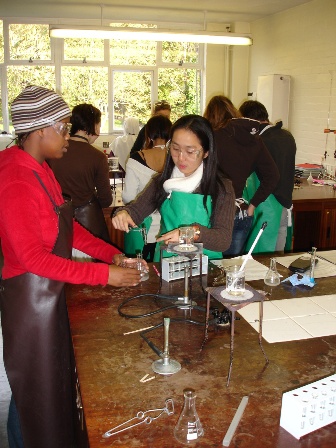Design experiments with esters
Thursday 24 October 2013
Teachers are always looking for suitable topics to give their students for design experiments. One common starting point is “Investigate an aspect of esterification”. This is actually given as an example on page 25 of the current guide with the suggestion that the student may come up with a focused research question such as “How does changing the carboxylic acid affect the equilibrium constant of the esterification reaction with ethanol?” or “How does changing the acid catalyst concentration affect the rate of the esterification reaction between ethanol and ethanoic acid?”. In fact neither of these research questions is easy to design experiments to investigate as it typically takes one week for the reaction to reach equilibrium and without access to glc or some other sophisticated equipment it is not easy to follow the rate of the reaction. For this reason I steer students away from researching into the rate or position of equilibrium by giving them the design experiment before they have studied these topics but after they have done simple test tube reactions to make esters for Topic 10: Organic chemistry.
 Relevant esters can be made in a few minutes by warming a carboxylic acid and an alcohol in the presence of a few drops of sulfuric acid and then pouring the resulting mixture into sodium carbonate solution. This neutralizes the acid and the ester floats on the top. The dependent variable is then the smell of the ester. This has produced some excellent research questions such as:
Relevant esters can be made in a few minutes by warming a carboxylic acid and an alcohol in the presence of a few drops of sulfuric acid and then pouring the resulting mixture into sodium carbonate solution. This neutralizes the acid and the ester floats on the top. The dependent variable is then the smell of the ester. This has produced some excellent research questions such as:
Does changing the type of alcohol from primary to secondary to tertiary have any effect on the odour of the ester?
Is there is a trend in the smells of the esters produced between salicylic acid and a homologous series of alcohols?
Does cis/trans isomerism affect the smell of an ester? (This was determined by making esters with cis-but-2-ene-1,4-dioic acid and trans-but-2-ene-1,4-dioic acid).
Smell is an interesting property and students usually devise their own scale to measure it such as from 0 (revolting) to 10 (ecstatic). Clearly this is subjective but it does provide one way of obtaining some ‘quantitative’ data so that it could be assessed for Design although realistically not for Data collection and processing (DCP) and/or Conclusion and evaluation (CE). I actually use esterification as an introduction to design but some teachers do include it in their assessed samples. Usually moderators are quite happy with this but I was surprised by the comment from one moderator who stated that “smell is not chemistry”. Try telling this to all the chemists who work in the perfumes and food industries! Smell is actually a really interesting chemical property. Unlike colour it cannot be defined simply by a number such as wavelength. The commonly accepted theory of smell is that it depends on the shape of the odorant which fits into receptors in the nose by some sort of ‘lock and key’ mechanism. Recent work is challenging this and suggesting that it may also be due to molecular vibrations within the odorants. In 2004 Keller and Vosshall showed that humans could not tell the difference in smell between deuterated and undeuterated acetophenone. However earlier this year Gane et al. extended this work. Although humans cannot tell the difference between acetophenone and deuterated acetophenone they can distinguish between deuterated and undeuterated musk odorants. It seems as if we may be getting closer to quantifying one of the last chemical properties that has so far had to rely on subjective descriptions.

